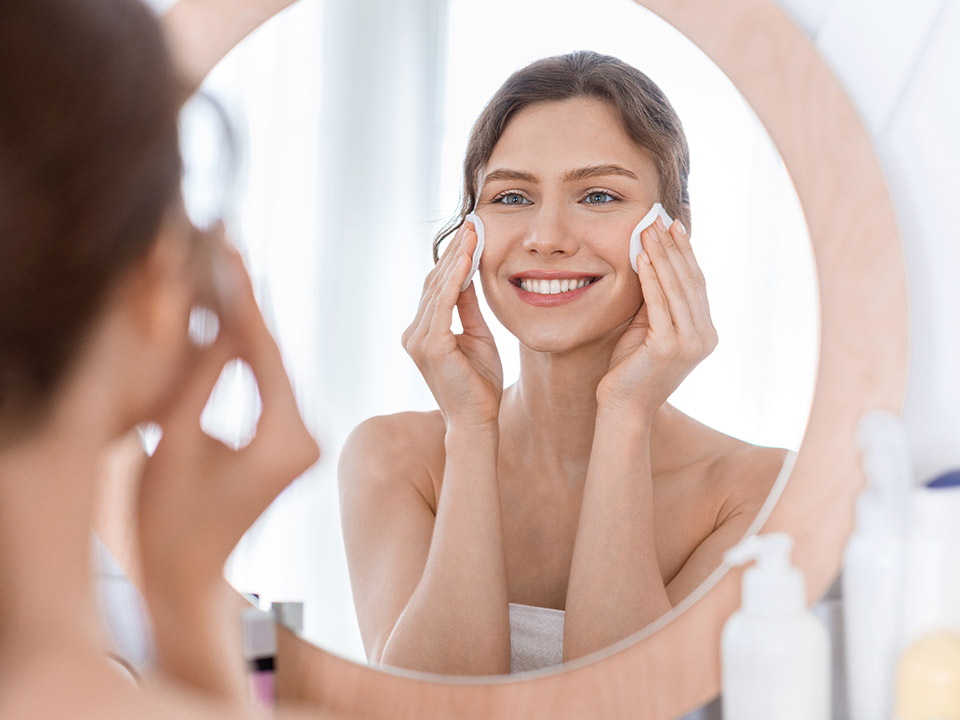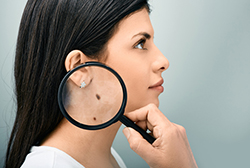
Photodynamic Therapy (PDT)
Photodynamic therapy involves light and photosensitizing chemical substances which is effective against a wide range of skin disorders like acne, actinic keratosis, nonmelanoma skin cancer, etc. It is approved by the U.S Food and Drug Administration (FDA) for the treatment of precancerous skin growth due to damaged cells in the outer layer of the skin. The cells in the epidermis of the skin are damaged due to exposure to the sun. It causes rough scaly patches on the skin specifically in the face, scalp, forearm, neck, lips, and back. It is more prevalent among older adults as they tend to develop lesions over a long period. These lesions can become cancerous and should be treated effectively using Photodynamic Therapy (PDT).
Treatment Plan
The phototherapy treatment plan involves light which photosensitizers and tissue oxygen. Reactive oxygen species are produced using the photosensitizer which is excited using the light source at a specific wavelength. It is a multistage process wherein type 1 free radicals are generated through electron transfer and the highly reactive state of the oxygen (singlet oxygen) is produced. It is highly effective in the treatment of actinic keratosis as it is classified under light-sensitive medicine wherein the light source destroys the abnormal cells. It is not only effective against skin conditions like actinic keratosis but also nonmelanoma skin cancer, lung cancer, bile duct cancer, pancreatic cancer, etc. It is a non-invasive procedure that involves a prodrug also known as 5-Aminolevulinic acid (ALA) or Levulan. Treatment involves shrinking oil glands which contribute towards acne formation along with blackheads, whiteheads, and comedones. It also reduces the bacteria on the facial skin which leads to acne breakout and improves skin texture. It improves wrinkles on the skin, roughness, scaly patches, etc., and keeps the skin smooth and clean. Common topical sensitizers used in the Photodynamic Therapy (PDT) procedures are 5-Aminolevulinic acid and methyl aminolevulinate.
Photodynamic Therapy (PDT) Procedure and Tips
Photodynamic Therapy (PDT) is primarily performed in an outpatient setup wherein patients are put on protective clothing, eyewear, and gloves to protect their skin and any exposed region. Patients typically lie down on an examination table wherein the region of the skin which requires PDT is exposed for treatment. Photosensitizing light is applied to the exposed region for a period of 5 to 45 minutes. Multiple sessions are conducted for the next couple of weeks depending upon the condition. The photosensitizing agent is absorbed by the unhealthy cells over a period which leads to its destruction leading to successful treatment of various skin disorders like acne, actinic keratosis, nonmelanoma, skin cancer, etc. After Photodynamic Therapy (PDT), patients might encounter pain, swelling, or burning sensation in the exposed region of the skin. There might be skin discoloration, blisters, or scales. Some patients also reported skin infections in adverse situations. Overall, we should remember that it is part of the treatment process and in case the symptoms aggravate, patients can notify their healthcare practitioners.
Effectiveness and Recovery
Photodynamic Therapy (PDT) is more effective compared to other forms of therapy like cryotherapy. It completely removes lesions from exposed regions of our body like the face, scalp, forearm, back, etc. It operates at an optimum wavelength of 600-800nm which is effective and has an extended therapeutic window. It excites oxygen molecules from the triplet ground state to the singlet which destroys abnormal cells and treats cancerous lesions on the skin. The recovery period can vary for every individual. However, 4-8 treatment series of treatment plans are recommended with an interval of 2-4 weeks apart. It has the potential to treat patients suffering from squamous cell carcinoma. Photodynamic Therapy (PDT) has the potential to restore healthy cells and growth as it uses light and photosensitizing chemical substances like 5-Aminolevulinic acid (ALA) which enables us to remove cancerous cells and restore growth. These photosensitizing agents are injected into the bloodstream which is absorbed by the cancerous cells in a tumor. During Photodynamic therapy (PDT), the tumor absorbs light which destroys the cancerous cells. The light is directed through the optical fiber cables which help us to deliver the light to specific parts of our body through an endoscope for locations inside our body or light-emitting diodes (LEDs) for surface lesions or cancer on our skin. The PDT treatment is performed as an outpatient procedure wherein patients have to complete a series of treatments which can be completed within a couple of weeks. Photodynamic Therapy (PDT) is approved by the U.S Food and Drug Administration (FDA) for treatment against skin disorders and cancer like cutaneous T-cell lymphoma. PDT has shown effective results against cutaneous T-cell lymphoma which doesn’t respond to any other therapies.
Future benefits of Photodynamic Therapy (PDT)
Clinical trials have shown that PDT can be expanded for a wide range of cancers and its effectiveness can be improved further. Current research is focused on developing more powerful photosensitizing agents which can be absorbed by the cancerous cells and destroyed by the emitting light sources. Researchers are also focussing on developing advanced equipment which will enable faster and effective resolution of the lesions and skin cancers. It will deliver the light sources to exact locations wherein photosensitizing agents are absorbed by the cancerous cells and eliminated by the light source. As per clinical studies, there are no long-term side effects of Photodynamic Therapy (PDT). It is safer compared to surgery as it is less invasive and more precise. The treatment cost for Photodynamic Therapy (PDT) is cheaper compared to other available options.
Prognosis of Photodynamic Therapy (PDT)
Most of the patients after undergoing Photodynamic Therapy (PDT) resume their daily activities almost immediately. They are advised to stay indoors and avoid strong or direct bright lights. During a certain stretch of the period, they are advised to avoid the natural light in the exposed region by wearing protective clothing and hats. Patients are also advised not to use helmet-type hair dryers or use strong examination lamps. Maintaining precautions helps the patients to stay safe and recover quickly within due time. Overall, Photodynamic Therapy (PDT) is a safe, effective, and minimally invasive procedure for patients suffering from sun-exposed skin disorders like acne, actinic keratosis, nonmelanoma, or skin cancer. It is an outpatient procedure which means that patients can go home the same day and resume their usual activities at home or workplace. They have to maintain certain precautions until they complete the healing period. Clinics like Pure Dermatology – Cosmetic and Hair Center at Newport Beach, CA perform PDT for patients suffering from skin disorders. It has proven effective and efficient with successful results. Make an Appointment Today!





